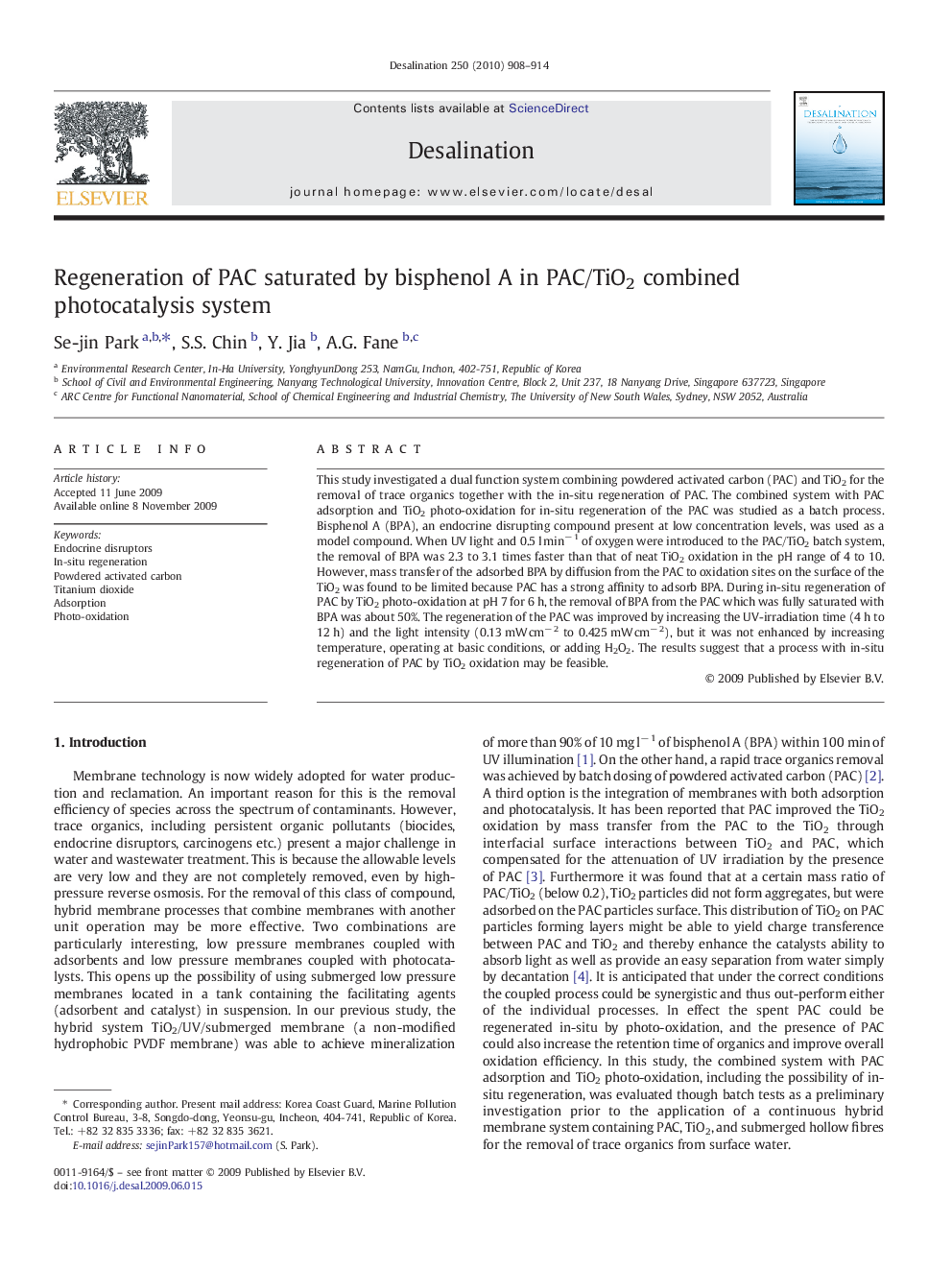| کد مقاله | کد نشریه | سال انتشار | مقاله انگلیسی | نسخه تمام متن |
|---|---|---|---|---|
| 625973 | 1455441 | 2010 | 7 صفحه PDF | دانلود رایگان |

This study investigated a dual function system combining powdered activated carbon (PAC) and TiO2 for the removal of trace organics together with the in-situ regeneration of PAC. The combined system with PAC adsorption and TiO2 photo-oxidation for in-situ regeneration of the PAC was studied as a batch process. Bisphenol A (BPA), an endocrine disrupting compound present at low concentration levels, was used as a model compound. When UV light and 0.5 l min− 1 of oxygen were introduced to the PAC/TiO2 batch system, the removal of BPA was 2.3 to 3.1 times faster than that of neat TiO2 oxidation in the pH range of 4 to 10. However, mass transfer of the adsorbed BPA by diffusion from the PAC to oxidation sites on the surface of the TiO2 was found to be limited because PAC has a strong affinity to adsorb BPA. During in-situ regeneration of PAC by TiO2 photo-oxidation at pH 7 for 6 h, the removal of BPA from the PAC which was fully saturated with BPA was about 50%. The regeneration of the PAC was improved by increasing the UV-irradiation time (4 h to 12 h) and the light intensity (0.13 mW cm− 2 to 0.425 mW cm− 2), but it was not enhanced by increasing temperature, operating at basic conditions, or adding H2O2. The results suggest that a process with in-situ regeneration of PAC by TiO2 oxidation may be feasible.
Journal: Desalination - Volume 250, Issue 3, 30 January 2010, Pages 908–914